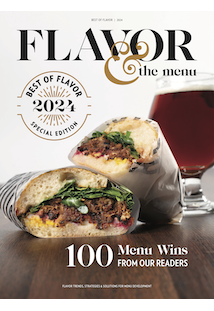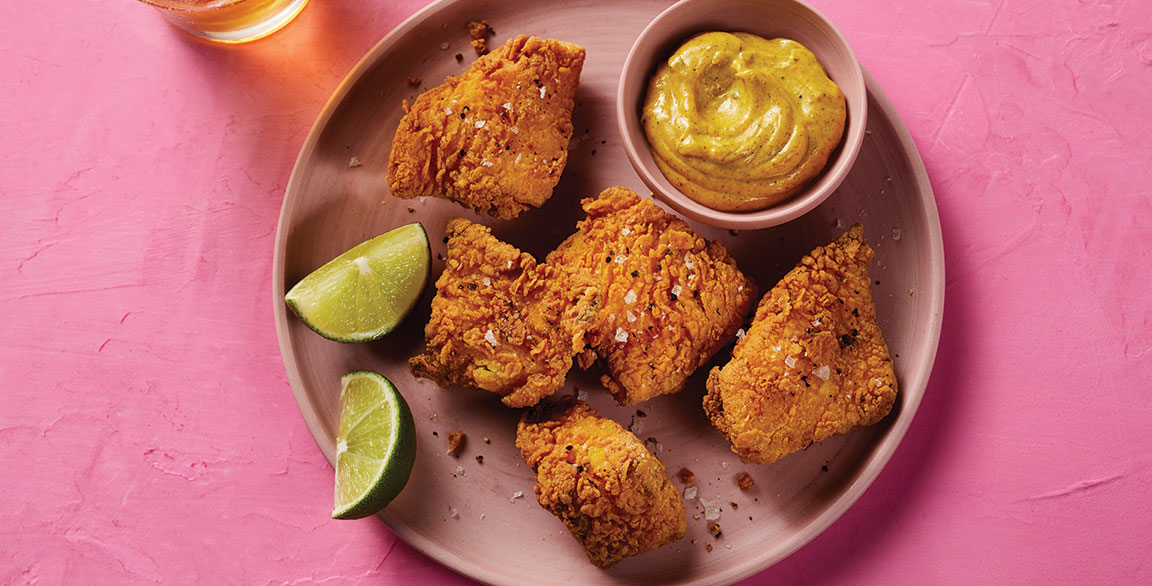

Commodity boards connect dairy farmers, potato growers, cattle ranchers, fishermen, sheep farmers, soybean producers—the list stretches across the blue planet—to foodservice. These promotional boards have always offered chefs recipe ideas, marketing tools and collaborative initiatives that highlight their commodities while providing restaurant brands forward-thinking menu inspiration. As the pandemic has affected profitability, back-of-house labor, SKU management, flavor preferences and to-go viability in menu options, we reached out to a handful of commodity board representatives and asked them to share how they are evolving the programs that support their commodities to help solve today’s professional kitchen challenges.
1SEA POTENTIAL
Recent Datassential research identifies seafood as the second-most-missed menu category since safety measures prompted restaurant closures and/or limited menus. Keen to assist foodservice operations in tapping into consumer cravings, Alaska Seafood Marketing Institute (ASMI) quickly adapted its tactics for supporting operators.
“As many chefs shifted their operational models to options like takeout or cook-at-home meal kits, we increased our work directly with chefs to provide wild Alaska seafood to them at home, coordinate chef cooking demos across social media and share tips on wild Alaska species and cooking techniques that are better suited for takeout service and reheating,” says Megan Rider, ASMI’s domestic marketing director.
ASMI has identified dishes like wild Alaska pollock burgers and nuggets, salmon burgers, crispy fried pollock and cod sandwiches, and tacos as particularly well-suited for takeout.
“While Alaska’s flash-freezing processes have always been an integral part of preserving quality through the supply chain, the availability of our wild and sustainable frozen seafood is more important than ever, reducing waste and allowing restaurants and operators more flexibility in using the products as they work within limited-service options,” says Rider. Through its “Cook It Frozen!” program, ASMI is providing new materials aimed at educating back-of-house staff on techniques designed to maximize frozen seafood options on today’s menus.
For more information: alaskaseafood.org/retail/cook-it-frozen/
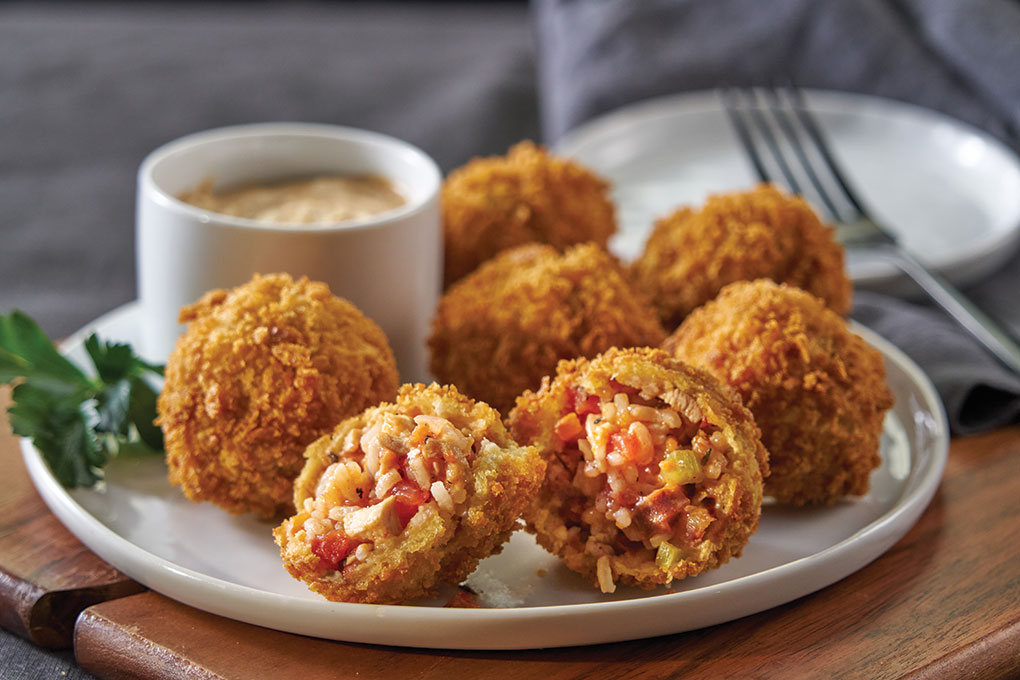 USA Rice
USA Rice Jambalaya Arancini captures Cajun flavors in a craveable Italian-style bite, featuring U.S.-grown long-grain white rice, chicken and andouille, served with rémoulade. The rice holds the heat well for takeout and carries bold flavors beautifully.
2Rice to the rescue
The pandemic prompted USA Rice to readjust its original programming to meet the evolving needs of operators. “We began creating resources to help foodservice establishments reopen and understand how to incorporate U.S.-grown rice into curbside-friendly operations,” says Cameron Jacobs, director of domestic promotion for USA Rice. He notes how cost-effective U.S.-grown rice can play an important role in simplified menus, to-go meals and authentic dining. “Rice performs extremely well in takeout and delivery and even serves a functional role—retaining heat and keeping the food above it warm. Unlike many other starches, rice maintains its flavor and texture in takeout and delivery applications,” notes Jacobs.
Additionally, USA Rice has developed support initiatives for menu developers through its “Rice to the Rescue” program, which features recipe inspiration, videos and downloadable resources for operators, and a relief kit including an Aroma 60-cup commercial rice cooker, rice, a case of to-go packaging and a case of disposable masks. Operators can sign up online to receive the free kits, which will begin mailing in late September.
But ultimately, the organization’s most important pivot was increased communication. “We were in frequent contact with government officials to ensure our industry was considered essential,” says Jacobs. “We connected our members with state and federal resources to work safely through the pandemic, and we stayed informed on how the impact of COVID affected the different segments of our industry.”
For more information: thinkrice.com
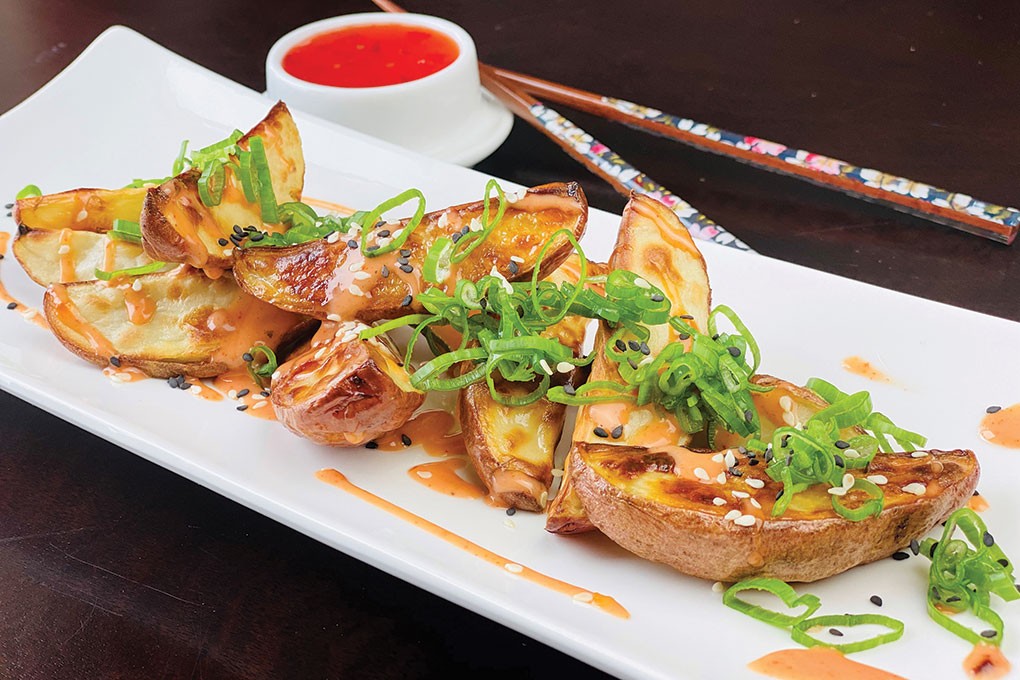 Potatoes USA
Potatoes USA Bang Bang Chile Potatoes hold up well in delivery, thanks to a crisp bake. They’re served with a drizzled sauce of mayo, Sriracha and sweet chile.
3SUPPLYING SOLUTIONS
With so many food industry players affected by the pandemic, major disruptions in the supply chain presented a serious challenge to foodservice operators and growers alike. Potatoes USA kept its focus on the foodservice segment, concentrating efforts on creating assets to help teach operators how to prepare and package potatoes for optimal to-go experiences. Special attention was obviously given to fries here, and a library of best fry practices is hosted online at YourGuideToFries.com. “The craving for many restaurant dishes is higher than ever right now, and fries are right at the top of the list,” says Kendra Keenan, global marketing manager-foodservice for Potatoes USA.
“Our No. 1 goal is to supply operators with solutions that help drive traffic into the restaurant, solutions for delivery, takeout and increasing revenue,” she says. “We want to arm operators with labor-saving techniques and menu ideas to help relieve current back-of-house strains.” Another smart tactic employed by the board is direct-to-consumer advertising. “We’ve been advertising to consumers in an effort to get them excited about ordering delivery and takeout and going back out to restaurants,” says Keenan.
For more information: potatoesusa.com
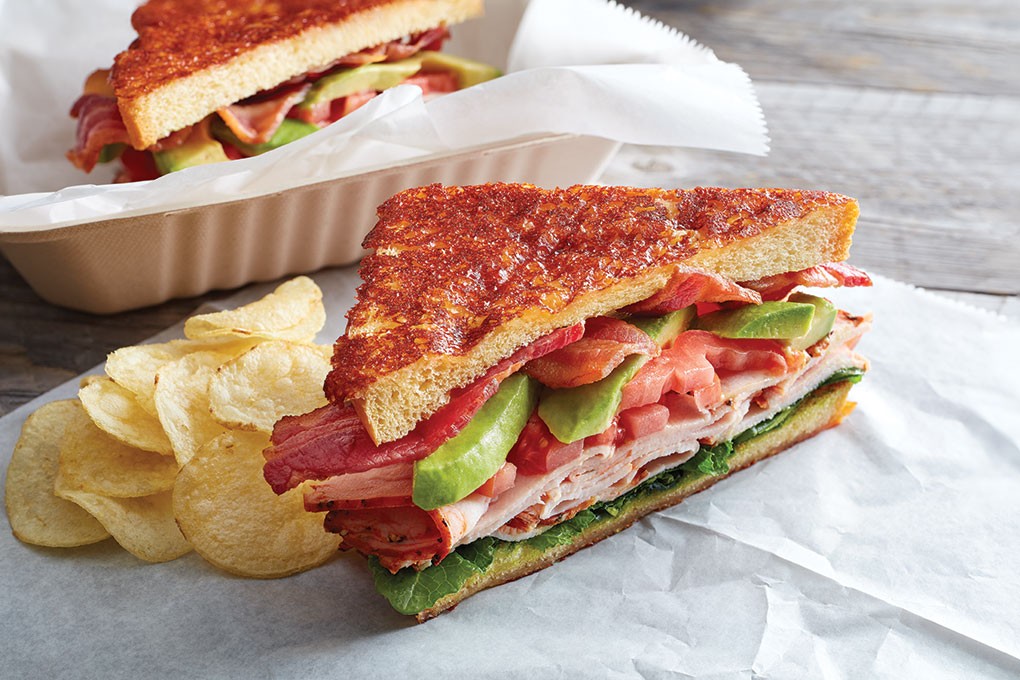 Carlos Garcia
Carlos Garcia This Inside Out Grilled Cheese California Club Sandwich dials up texture and flavor with a crispy Real California Hispanic-style manchego cheese crust. Consulting chef Grant Morgan builds out the sandwich with a slather of butter, basil aïoli spread, baby kale, roasted turkey, tomato, applewood-smoked bacon and avocado.
4DAIRY connections
Helping operators hone a competitive edge through product and recipe innovation today requires a shift in gears for commodity promotional organizations like the California Milk Advisory Board (CMAB). Its stable of staples—milk, cheese and butter—are valuable tools in menu development, whether items are targeted to dine-in or takeout applications.
“We invested resources to quickly engage chefs and other foodservice professionals and showcase best practices for success during a rapidly changing environment,” says Jennifer Giambroni, CMAB’s director of communications. These have featured collaborative projects, including a video series, to highlight easy menu concepts for off-premise delivery and explain how operators can restructure their business model to capitalize on new service approaches. This includes taking a few notes from the pizza business, where improvements in online ordering and delivery have paid off in spades.
“While continuing to invest in resources to help foodservice partners evolve, the most essential thing our team will be doing is working to connect operators with our California dairy suppliers,” says Giambroni. That means showcasing strong foodservice performers like mozzarella, Monterey Jack and Hispanic-style cheeses.
For more information: realcaliforniamilk.com/foodservice
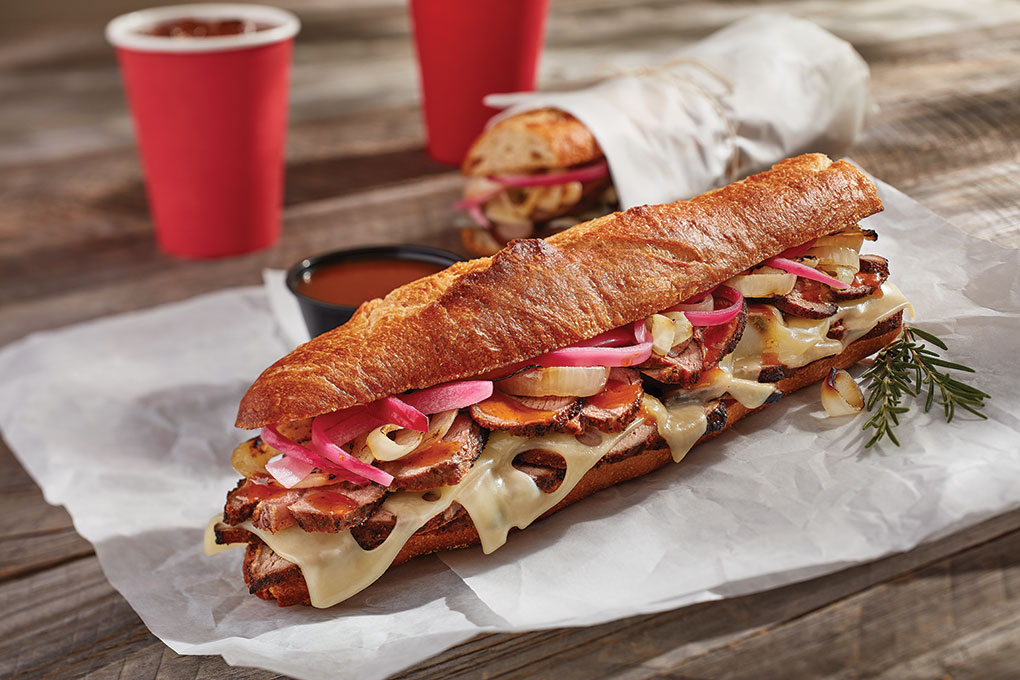 Carlos Garcia
Carlos Garcia Stephen Toevs, director of culinary development with Luxury Brands, Marriott International, created this Down Under BBQ Sandwich starring thinly sliced grilled Australian lamb (cut from the rump), Carolina barbecue sauce, Swiss cheese, grilled onions, pickled onions and rosemary—all on grilled French bread, answering the call for comfort, portability, ease of execution and flavor.
5Ready for market
True Aussie Beef & Lamb has focused recent efforts on helping its foodservice partners maximize the value they get from Aussie meats and providing them with the menu development support they need. That can be as simple as identifying and working with Aussie meat suppliers and choosing cuts and formats for results that best address evolving needs and core desires.
“We’ve been fascinated to see how broadly consumers are interested in choosing what they eat to improve their health—and the health of the planet. These have long been drivers for grass-fed beef and lamb, and they’re now more relevant than ever,” says Catherine Golding, North American business development manager for True Aussie Beef & Lamb.
“There are lots of menu challenges to solve for: food cost, value perception, takeout and delivery fit. We’ve done the homework to be ready to help tackle them all,” she says. “With so much uncertainty in the market, our consumer insights are quite valuable to help foodservice brands make decisions.” True Aussie’s online Foodservice Resource Center features presentations, videos, research data and other assets to help drive menu innovation as the pandemic wears on.
For more information: trueaussiebeefandlamb.com/foodservice-resource-center

